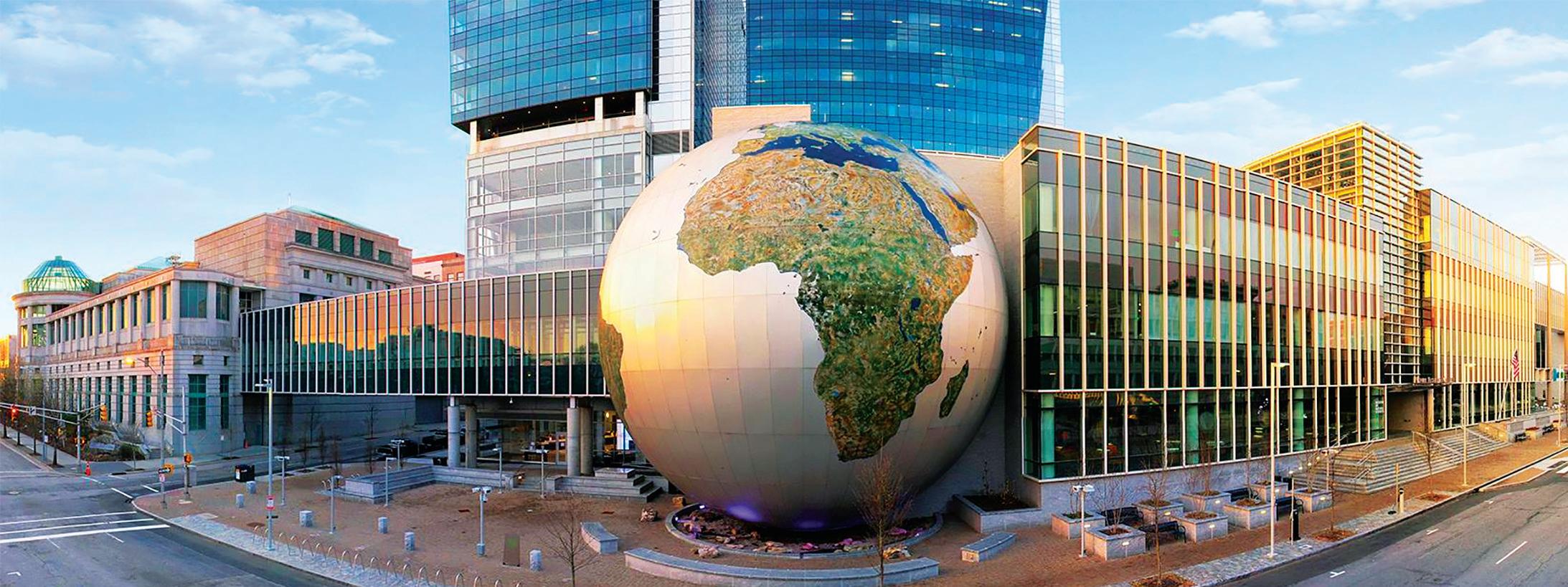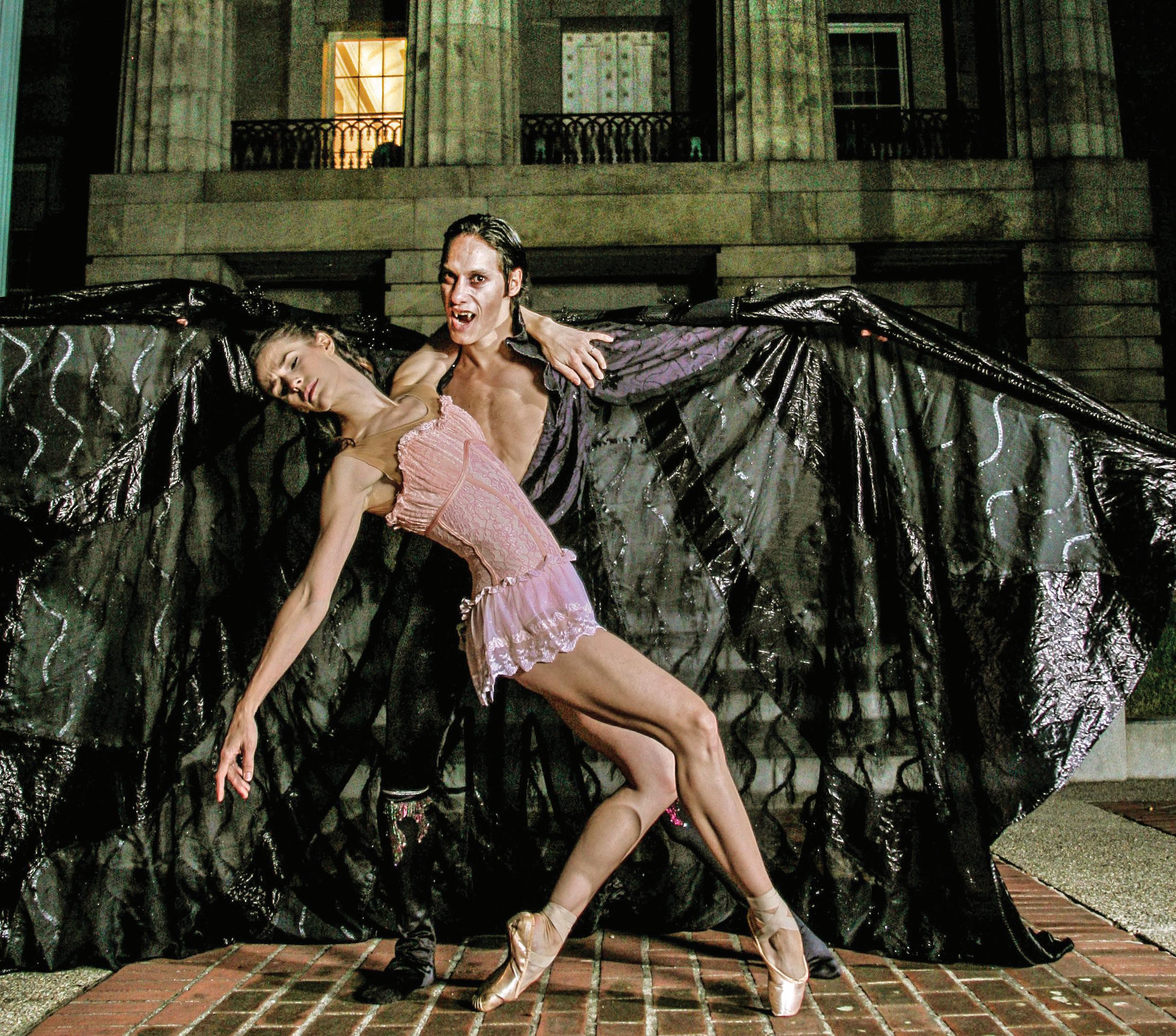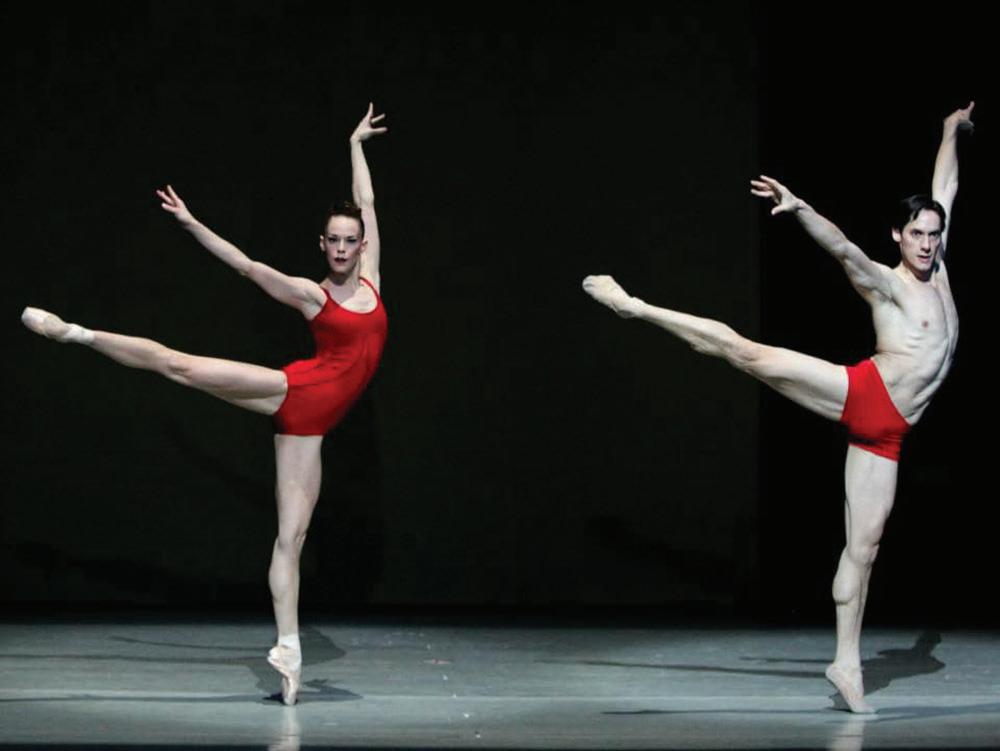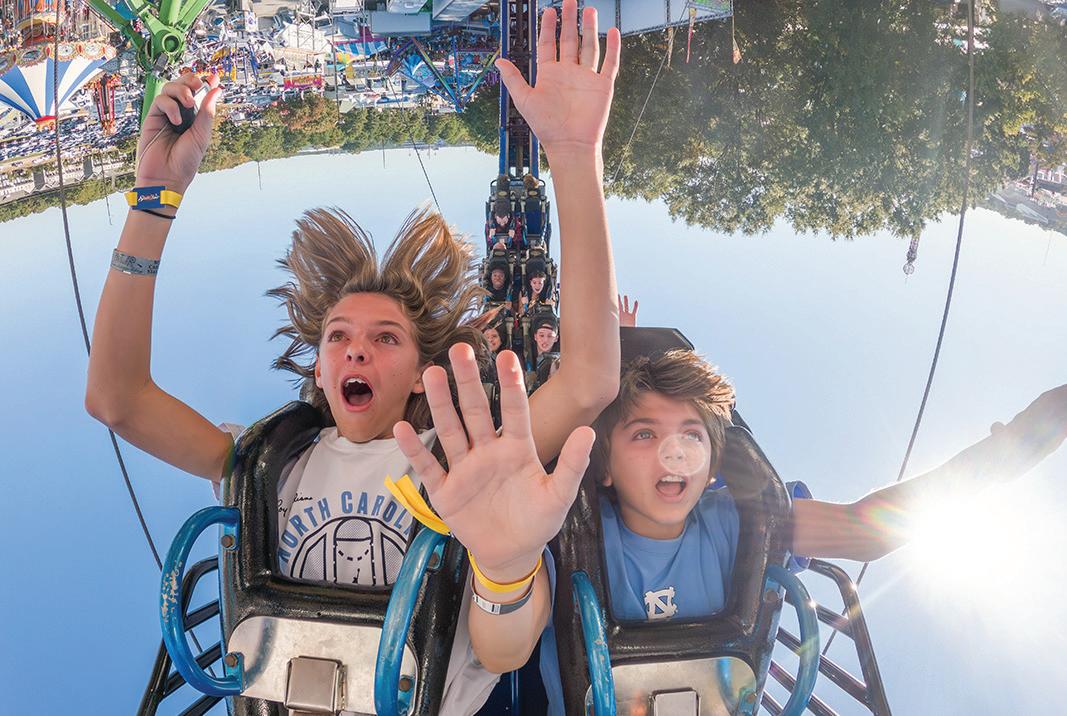








Triangle Downtowner Magazine acquired BOOM! Magazine and merged into one locally owned and managed publication.
Mailing Address: PO Box 27603 | Raleigh, NC 27611 www.TriangleDowntowner.com
Please call to schedule an office appointment
Advertising and General office inquiries: www.triangledowntowner.com/pages/contact
press releases: www.triangledowntowner.com/pages/contact
Publisher & Co-founder Crash S. Gregg
Co-Founders Randall Gregg, Sig Hutchinson
Lead Designer Cyndi Harris
photojournalist Barringer Campbell
The Triangle Downtowner Magazine is a locally-owned and operated monthly print magazine dedicated to coverage of the Triangle area. Current and archived issues of the Downtowner are available at www.TriangleDowntowner.com
Follow us on our social media pages for photos and more news between print issues.


www.facebook.com/triangledowntowner www.x.com/WeLoveDowntown www.instagram.com/triangledowntowner
Read archived issues from 2006 to current online at www.TriangleDowntowner.com The Downtowner is a proud member of the following organiza�ons
©Copyright 2005-2024, Triangle Downtowner Magazine/Raleigh Downtown Publishing, LLC. The name, logo, and any logo iterations of the Triangle Downtowner, Triangle Downtowner Magazine, Downtowner, and the Downtowner D graphic are a TM of Triagle Downtowner Magazine/Raleigh Downtown Publishing, LLC. No part of this publication may be reproduced without express written permission. This magazine is proudly printed on recycled paper and uses toxin-free, environmentally-friendly, soy ink.

Please recycle or give to a friend after you’re done reading!


The Raleigh City Council recently approved by unanimous vote the plan to relocate Red Hat Amphitheater one block south of its current site. The move clears the way for the convention center expansion and development of Omni’s new downtown hotel, which will be Raleigh’s largest. There is momentum building for the city’s five-year Downtown Economic Development Strategy, designed to transform downtown from a corporate office environment into a connected, dynamic, livable urban district that attracts residents and visitors with open public spaces, family activities, art and design, music and special events, restaurants, and diverse retail options.
The economic development strategy, presented in September by the Downtown Raleigh Alliance at the city’s State of Downtown event, laid out 10 key strategic objectives necessary for short term progress and longterm transformation in pursuit of an ambitious vision for downtown.
Strategy 1 – Energize the downtown core with daily activation and placemaking
To thrive, the downtown core needs a compelling vision that prioritizes street activity, improves connections to other downtown districts and attracts a variety of people - not just office workers. This can be achieved with a mix of retail strategies, physical improvements, and programming to activate Fayetteville Street and surrounding blocks, branding the central business district as “North Carolina’s Main Street,” and creating new experiences that attract entrepreneurs, residents, and visitors. Recommendations include a redesigned streetscape for Fayetteville Street and for City Plaza, regarded as Raleigh’s front porch and main stage. Refreshed marketing efforts are needed to promote local assets and position downtown as a daily destination with family-friendly options and wayfinding for downtown attractions. Raleigh’s renowned Black Business District should be celebrated through public art, programming, and implementation of the South Park Heritage Walk.
Strategy 2 – Elevate public art for a unique experience that celebrates Raleigh and North Carolina
Raleigh is known as a hub for creative arts and artists, and that identity deserves to be highlighted. Downtown
includes vibrant examples of the city’s creativity but more can be done to support local artists and create a distinctive downtown experience. Music and art should be a focus, using more frequent, small-scale events featuring live concerts and outdoor performing arts showcasing Raleigh’s culturally diversity. Special museum exhibits could be installed downtown temporarily. Public art by local artists should be commissioned for the Black Business District, City Plaza and Halifax Mall.
Strategy 3 – Diversify retail opportunities to address merchant needs
Downtown offers a broad mix of locally owned restaurants, bars, and unique shops and continues to attract new businesses. However, work-from-home policies have impacted storefronts and available spaces are often too costly for many entrepreneurs. Earlier this year the DRA released the planning document, “Activating the Downtown Core,” exploring a range of ideas to reinvigorate downtown retail, restaurant and entertainment districts. A designated Shopping & Dining District could be anchored by chef-driven restaurants, destination bars, and creative retailers representing the best of North Carolina. A Restaurant & Bar District

could come alive with a mix of innovative eateries and nightlife spots, and an Arts & Entertainment District could be home to lively galleries, merchants, music, and entertainment.
Strategy 4 – Grow and diversify downtown’s technology and innovation sector
The Research Triangle has a thriving innovation economy, and Downtown Raleigh is home to several notable software and digital technology companies. City policies should ensure they are supportive of tech businesses, including later stage start-ups, prioritizing jobs, and capital investment. The Triangle is also home to a growing biotech R&D presence, and Raleigh is well positioned for future growth in this sector with its access to office and lab space as companies elsewhere in the Triangle expand. Raleigh leaders should consider revisions to Business Investment Grant policies and prioritize strategic partnerships to stimulate migration of the biotech sector into specialized spaces downtown.
Strategy 5 – Position Downtown Raleigh as the creative design center of the Triangle
Downtown Raleigh is home to the largest concentration of architectural, design, digital marketing, and creative production firms in the Triangle. Strategic initiatives highlighting this sector – broadening downtown’s the overall business brand – could include a Design Week-type event. Special iconography and branding, with visual elements activated along key corridors, could establish Downtown Raleigh as the Creative + Design Center of the Triangle, helping to recruit additional firms in the space. North Carolina State University, Meredith University, Shaw University, and William Peace University could maintain a downtown “Design Hub” to showcase faculty and student work, evolving into a community design showcase.
Strategy 6 – Expand the ecosystem for Minority and Women-owned Business Enterprise
Entrepreneurship in Raleigh has flourished with a substantial number of new businesses under diverse ownership. Business support organizations and university programs have formed and expanded in response. Yet, there remains an imperative to address overlapping services, revenue disparities, and unmet needs

for MWBE businesses aiming to scale, pivot, or exit. Downtown Raleigh can have a specific value proposition in developing an ecosystem for MWBEs in sectors such as healthcare, administration, and professional services. These businesses can benefit from internship and job placement pathways in partnership with local higher education institutions. Some of these efforts may require new, inclusive and non-discriminatory solutions to comply with the Civil Rights Acts.
Strategy 7 – Integrate the Government Campus with the Downtown Core
The State Government Complex is undergoing a gradual redeployment of space and workers as the needs of state government evolve. There are opportunities to bring the downtown and government campuses together in ways that extend and enhance the identity of downtown, reinforce Downtown Raleigh as “North Carolina’s Main Street,” and incorporate Peace Street as a connector from Glenwood South to historic Person Street and Oakwood. Integration with the state government campus would also add more connectivity and vibrancy through the northern part of downtown by better integrating with new development at Seaboard Station and the growing restaurant and retail district along Person Street.
Strategy 8 – Create exceptional public spaces for everyone
Downtown public spaces should be inviting to all, including residents, visitors, workers, students, and families. As downtown grows, the City of Raleigh and its partners must continue to invest in creating a range of exceptional public spaces – everything from the once-in-a-generation transformation of Dix Park into
a world-class destination to quiet, shady neighborhood spots. Nash Square, for example, presents an opportunity for conversion into a more dynamic public space that is nature oriented and distinct from Moore Square, which can be enhanced with additional family-friendly amenities, activities, and events. Market Plaza by the downtown YMCA could be redesigned for play and exercise. The Fayetteville Street corridor could be streetscaped and “greened up” as a linear park. The State Capitol grounds could come alive with public art and other amenities, including an inviting pedestrian connection between the nearby museums and the downtown core. In Glenwood South, Smoky Hollow Park can offer bicycle and pedestrian connections to downtown and the city’s greenway network. In the southeast quadrant, the South Park Heritage Walk can physically connect with the culture and history of East RaleighSouth Park, Raleigh’s largest historic African American neighborhood.
As major projects like the soon-to-be relocated Red Hat amphitheater, Dix Park, and various mixed-use developments get underway just south of downtown, it is critically important to not only connect Dix with the Downtown Core, but also the neighborhoods and destinations along the way. A proposed strollway will serve as a primary on-the-ground pedestrian and bicycle connection between neighborhoods and destinations. Distinctive signage, wayfinding, interpretive placemaking, and storytelling should be featured, combined with enhanced tree cover, landscaping, public art, and safe, well-designed lighting. Opportunities to celebrate the historic Fourth Ward neighborhood could be leveraged

by adding cultural trail elements and markers to share the history of the community. A feasibility study is also needed for potential development of a pedestrian land bridge and an aerial tram system over Western Boulevard, connecting Dix Park and downtown.
As the city grows, encouraging more people to walk, bike, and take public transit will be important to maintain a high quality of life. Downtown Raleigh has the bones for a great walkable and bikeable experience. However, while everything downtown is within a 10-minute bike ride, it feels disconnected. Major thoroughfares create barriers. Dawson and McDowell Streets effectively cut downtown in half. Western and Martin Luther King, Jr. Boulevards separate downtown from Dix Park and the development growing around it. Other corridors with increasing development and activity such as Glenwood Avenue and its adjacent streets lack appropriate pedestrian infrastructure. They need to be redesigned for a denser, more active, and navigable downtown. Safely and efficiently connecting all that downtown has to offer will be critical in creating a vibrant and cohesive experience.
In summary, Raleigh is founded on big ideas. Some ideas will require a significant amount of planning, coalition building and time to bring to fruition. There is the vision of a downtown sports arena or stadium, and the goal of eventually moving Central Prison. Others, such as creating a new, modern downtown library and improving affordable housing options in the downtown area, should be realized much sooner. Downtown Raleigh has an exciting future ahead, and the momentum has begun.
The Project Team for the Economic Development Strategy consisted of: The City of Raleigh, Downtown Raleigh Alliance, Interface Studio, Ninigret Partners, and &Access.
Downtown Raleigh Economic Development Strategy: https://bit.ly/2024-DTR-plan
Downtown Raleigh Activating the Core Report: https://bit.ly/2024-DTR-core
Order a $20 share of fresh produce (a $50+ value!) Take what you can use. We’ll donate what you leave. Eat good. Do good. We are a registered 501(c)3 nonprofit. Sign up or order your share now at www.produceproject.org.


Interviewed by Crash S. Gregg
For the full interview video, please visit our YouTube page, https://www.youtube.com/@DowntownerMagazine
Crash: We’re here with Marcelo Martinez, Principal Dancer at Carolina Ballet, on stage after one of his performances in Raleigh Memorial Auditorium. We’ll be talking about his career and upcoming retirement from Carolina Ballet.
Tell us about how your first day here at the ballet. What were your initial thoughts, and how did you feel on your first day?
Marcelo: One of the first memories I have with the company was when we had a summer program in Wilmington. It was right after Ricky (Robert Weiss, Founding Artistic Director) had hired me, and he asked me to be a part of the summer program. We performed Waltz of Vienna. My first show back in Raleigh was Carmina Burana, which was later also my first Principal role with the company. It will now be my last show this November, as I want to close the entire cycle of my ballet career with that same production.


Crash: You’re originally from Paraguay. Tell us a little bit about the path that led you to Raleigh. Marcelo: I started like a lot of male dancers. My mom was taking my sister to ballet class one day, and she heard about the Cuidad del Este Municipal School of Dance that was opening. In 1994, she took me, my brothers, and my sister to class. And I really, really liked it. I remember the teacher at the school was going to an International Ballet Competition in Brazil, and they were talking about how cool it was. I think that was one of the reasons why I stayed because of the opportunities the dance world could offer. After I studied at the school in Paraguay, I got a scholarship at the Centro de Dança Rio in Rio de Janeiro, Brazil, and I studied there for four years. Lorraine Spiegler, an American choreographer involved with the Washington Ballet and the Kennedy Center, took a group of dancers from Brazil to perform at the Kennedy Center and take classes with the Washington Ballet. The director of Washington Ballet saw me perform and offered me a contract in 2004, and I danced three seasons with the company. I left in 2007, and through a friend, I met Zali (Zalman Rafael, current Carolina Ballet Artistic Director) in New York. I contacted him and asked, can you talk with your director (Richard Weiss)? I auditioned for Ricky, but he didn’t have any open contracts at the time. He told me he would keep me in mind. I was getting ready to go to New York to take place in the International Ballet Competition when Ricky called and said another dancer from France couldn’t make the season, so he asked if I was still interested in moving down here. I got the contract, and that’s how I started with Carolina Ballet.
Crash: Please share with us any memorable performances, the most challenging part of being a Principal dancer, both physically and mentally, and your practice regimen.
Marcelo: The pressure is always intense. Everybody expects you to be the best on and off the stage all the time. You are your own worst enemy, because when we dance in front of a mirror, you always critique yourself. And the other thing is about feeling that it’s not good enough, and you’re constantly pushing and pushing, and you don’t know how much you can do. The challenge is to balance everything. Now that I’ve been dancing for almost 20 years, I understand the balance, how much I have had to focus on rehearsals and to have that ability to give back to myself. The intensity of the rehearsals never compares to the intensity of performing. You only have one chance, and every performance is different, even though you always expect it’s going to be the same. I remember after a dress rehearsal, Ricky asked me if the music seemed fast. I didn’t know that I had any input, so I said,” I don’t know, maybe.” Right then, the orchestra director was walking by the stage, so Ricky asked him, “Can you play slower for him next time?” The next day, it was opening night, and the director was watching me. I had never felt like I was in control of the music before. I could take my time, and take more of a jump. It was amazing. That show was so memorable for me. Later, when Ricky asked me to become a Principal dancer, he told me the title comes with a lot of responsibility. He said, “Now you’ll be a face of the company, so just take this very seriously, take care of yourself, and don’t get a big head.”

Crash: That’s good advice, for sure. What advice would you give to future aspiring dancers who are thinking about going into ballet?
Marcelo: One, to have discipline. You must be disciplined because ballet is always about working. It’s like you’re going to the gym. You can start right away lifting a lot of weight. You have to develop the strength with the technique, and repetition is what’s going to make you disciplined to develop. Patience is what is going to help day by day until one day you feel like, now I can do this. Understanding and having that discipline and patience is good for anything in life.
Crash: Of all the many roles you’ve had throughout your career, are there any favorites you enjoyed the most?
Marcelo: Dracula was one of the was my first Principal roles that was created for me. We were in DC with some friends watching the Royal Ballet when Ricky mentioned that he wanted to buy a Dracula production. But he really didn’t like any of the ones that he had seen around the country, so he asked Lynn Taylor-Corbett (now Principal Guest Choreographer) to do a version for us and told me I could help create our Dracula. I dived deep into research for the role, and I found a lot of interesting stuff. I asked Lynn what kind of Dracula she wanted because all the Dracula performances you always see are creepy and very dark. She was like, I want a sexy rock star Dracula. In the movie Interview with The Vampire, he was a rock star, and that was my inspiration.
Crash: Triangle Downtowner Magazine featured you and Lara O’Brien on the October 2014 cover in front of the State Capitol building with you in full Dracula costume. That was such a great photo.
Marcelo: It was an amazing show. In the whole performance, all the narration is everyone talking about Dracula. He doesn’t come out until the end. The entire performance is just building up to that point. I had one entrance with two minutes on stage, then another with one and a half minutes, right at the finish. I was running from one side of the stage to the other. That was super exhausting but so amazing.
Crash: What influenced you to decide to retire? How are you preparing for your transition, and what’s next?
Marcelo: I’ve danced with the company now for 17 years. As I mentioned, my first performance in Raleigh was Carmina Burana. I’ve been talking about retirement for the past three years, and at one
point, Zali asked if I wanted to retire with that performance this year. I thought about it and said yes, it’s time. It’s going to be 20 years since I moved to the United States, and going back to 1994 when I first started, that’s 30 years of performing ballet. I just had to accept where I am, and I want to feel good about retiring. I want to still feel proud of what I’m doing, even though sometimes I hurt so much. But the reason why I decided to retire is because I know my body, and it’s slowly telling me it’s time to move on. I’d like to stay in Raleigh for a little while because basically, this is home now. Living here for 17 years is already more than I lived in my own country since I left Paraguay when I was 16. I’d like to go back to school to study art management, public relations, or something arts-related but still be involved with the company as much as they want me. I want to support Carolina Ballet, pay it forward, and help in any form.
Crash: Well, we’re happy that you landed in Raleigh. We’re thankful for your 17 years, and I know a lot of Carolina Ballet fans are going to miss you. We wish you the best in your future studies, and whatever you do, I’m sure you’ll be great at it. Thank you for taking the time with us today, and we’ll see you on stage in your final two performances.
Marcelo is appearing in the October production of Jekyll and Hyde (Oct. 17 – Nov. 3), and his last performance will be Carmina Burana (Nov. 21-24). Tickets are available on their website, www.CarolinaBallet.com and through the box office, 919.719.0900. Sign up for the Carolina Ballet newsletter at https://bit.ly/CB-news.


Photos by Justin Kase Conder
The state’s largest annual event, the N.C. State Fair draws nearly one million visitors through the gates each October in Raleigh, N.C. (and marks what many believe to be the surest sign that fall has officially arrived).
Eleven days of high-flying rides, deep-fried foods, live music, stunt shows, educational exhibits, nightly fireworks, and more have made for a can’t-miss event for generations of families – 2024 marks the 156th year of the event!
When is the N.C. State Fair?
The N.C. State Fair takes place in Raleigh, N.C., Thursday, Oct. 17, through Sunday, Oct. 27. The hours are:
Oct. 17: Noon-11pm
Oct. 18-19 and Oct. 25-26: 9am-midnight
Oct. 20-24 and Oct. 27: 9am-11pm
Note that the gates close for admission at 9:45pm each night.
Do I need tickets to enter the N.C. State Fair? How much does it cost?
Tickets are required for entry to the N.C. State Fair. If purchased in advance (through Oct. 17) online, gate admission is $10 for adults and $5 for youth (ages 6-12). Starting Oct. 18, tickets purchased at the gates of the event are $13 for adults and $7 for youth. Children ages five and under get in free.
OctOber 17-27,2024 OctOber 17-27,2024
Do I need tickets for rides at the N.C. State Fair? Is there an unlimited option?
Most rides at the N.C. State Fair require five to six tickets each. A sheet of 18 ride tickets can be purchased in advance online at https://bit.ly/2024-NCSF-tix (through Oct. 17) for $10. Starting Oct. 18, ride tickets cost $1 per ticket and can be purchased online or at the fair.
An unlimited ride wristband is also available. The price is $30 if purchased in advance, or $40 at the fair. Ride wristbands do not include admission to the fair and are good for one day. They also do not include admission to two activities – the State Fair Flyer and the State Fair SkyGazer. Those attractions require their own tickets ($6-$10).
What kind of rides does the N.C. State Fair have?
Giant Ferris wheels, spinning teacups, upside-down stomach turners, haunted fun houses, high-flying swings, sling-shotting roller coasters, and more – with nearly 100 different ride and game options, the N.C. State Fair has it all.
Returning this year is the ever-popular State Fair Flyer, a 10-minute chairlift ride that carries riders 1,400 feet across the midway as high as 45 feet in the air, plus the State Fair SkyGazer, a 155-foot-tall Ferris wheel that holds more than 200 people (and is the largest traveling wheel in America).
Please note that both of these attractions require separate ticket purchases not included in the unlimited ride wristband ($6-10).
What kind of food options does the N.C. State Fair have? What new options are there this year?
Turkey legs? Check. Roasted corn on the cob? Got that. Elephant ears and funnel cakes? Always. Candy apples, cotton candy, and deep-fried Oreos? Yes, of course!
The vendors at the N.C. State Fair provide all the classics you’ve grown to love at this time of year (plus many more).
Always a highly-anticipated announcement, 72 new food options were just unveiled – highlights include Flamin’ Hot Cheetos Funnel Cake, Cowboy Bites, Glazed Doughnut Coffee Float, Barbecue Bacon Queso Sandwich, and so much more. See the full list with photos here (https://bit.ly/2024-NCSF-newfoods). See how many you and your friends can eat!
Are beer and wine served at the N.C. State Fair?
Yes! Beer and wine were first served at the N.C. State Fair in 2017, and needless to say, it’s been a hit.
The N.C. Public House serves Tar Heel State-made

beer, wine, cider and craft soda. The attraction has been so popular, it now has a bigger home – in the South Dorton Arena Lobby just across from the State Fair SkyGazer.
One ticket ($10) gets you two servings of wine (3 ounce), cider or beer (8 ounce). Each attendee is allowed one ticket only (two servings). Craft soda purchases can be made for $5.
A Kegs & Corks Pass is available for $17 and includes
a FastTrack gate admission ticket plus one ticket for the Public House (https://bit.ly/2024-NCSF-tix).
The Public House is open noon-10pm daily, with extended hours until 11pm on Fridays and Saturdays.
When are the Fair fireworks?
The N.C. State Fair has nightly fireworks at 9:45pm over the large pond. The best place for viewing will be either near gate 8 or Heritage Circle. See a PDF map here


(https://bit.ly/2024-NCSF-map). Fireworks will be on the top left of the map.
Is there music at the N.C. State Fair?
Are concerts free?
Yes and yes! The Homegrown Music Festival made its debut at the N.C. State Fair in 2015, making the event the first state fair in the country to showcase only musical acts from its home state.
For 2024, the Homegrown Music Festival will feature two stages of music and more than 100 concerts >>>






from local artists (https://bit.ly/2024-NCSF-music). All concerts are free with admission to the fair.
What other attractions are there?
There is so much fun at the N.C. State Fair! A lumberjack show, a street-drum corps, folk festival, monster truck rides, motorsports mayhem, garden and agriculture competitions, and plenty more.
Download the daily schedule to get a feel for when and where your favorites are taking place (https://bit.ly/2024-NCSF-schedule).
Where do I park for the N.C. State Fair? Is parking free? Is there a shuttle?
Free parking is available at the North Carolina State Fairgrounds as well as at the nearby Carter-Finley Stadium and PNC Arena (short walking distance to fair

entrance). Note that PNC Arena parking will not be available on these dates: Oct. 19, 25, and 26.
The N.C. State Fair also offers free off-site parking at the corner of Edwards Mill and Reedy Creek Roads., with a free shuttle running the short trip to the fair entrance at gate 9 on Trinity Road Shuttles run continuously, beginning at 9am each day (11am on opening day, Oct. 17). Address: 4501 Reedy Creek Rd., Raleigh, 27607.
A second free park-and-ride option is located near Exit 290 off Chapel Hill Rd., with shuttles running continuously and dropping off at Gate 7. Address: 5766 Chapel Hill Rd., Raleigh, 27607.
A temporary Amtrak train station is also in operation during the N.C. State Fair, stopping just outside of gate 1. Search for station code NSF on the Amtrak website to book your trip. Note that the Amtrak option is available on all Fair days except for opening day (Oct. 17).
Is the N.C. State Fair accessible for visitors with disabilities?
The N.C. State Fair welcomes visitors of all abilities and has provided an accessibility guide for those who may have questions (https://bit.ly/NCSF-access).
The fair also has announced a second annual accessABILITY Day, presented by Bandwith – taking place Sun., Oct. 20 – offering a quieter, less stimulating environment (rides and games will operate during some hours with no lights, music etc.).
Exceptional Surgical and Non-Surgical Enhancements of the Face and Body From Licensed and Credentialed Physicians, Nurse Injectors, and Aestheticians. Visit our website: cynthiagreggmd.com


Portions of this article originally appeared on the visitRaleigh.com website and are featured here through a collaborative partnership with Visit Raleigh and Triangle Downtowner Magazine. The Greater Raleigh Convention and Visitors Bureau (aka Visit Raleigh) is the official and accredited destination marketing organization for all of Wake County. For more things to do in the Raleigh area, check out www.visitraleigh.com. The Downtowner is proud to promote Raleigh and the rest of the Triangle, including the surrounding counties of Wake, Durham, Chatham, Orange, Franklin, and Johnston. For more photos to really get an idea of what to expect at the NC State Fair, visit https://bit.ly/NCSFair












locallifestyledining, entertainment, arts, business, wine & food trucks, fashion, charities, and other topics
readers.
Welcome to our Fall issue of the Downtowner. There’s so much going on, including the State Fair, Canes hockey, college football, and many charity fundraisers (including several with donated ads in this issue).
of interest to our
We highlight high density areas across the Triangle as well the busy communities around them.
by local authors and photos by local
Also coming up are local elections, both City and State. We’ll be interviewing the top two candidates for Raleigh City Council as well as the Secretary of State position. We’ll post links to the interviews on the Downtowner Facebook and Instagram pages and my personal LinkedIn page (@ tags at the end). We hope these interviews will provide you with more information on the candidates who will be running for each position.
Writers! We’re always searching for new writers, so if you’re ready to join our team of talented authors, send us a message to writers at welovedowntown dot com. Share with us what you’re passionate about, and don’t forget to include a few links or examples of your work. We look
forward to collaborating with you to craft compelling stories that showcase all the great people who live and work throughout the Triangle. Let’s bring the local community to life through the power of the written word.
Cheers,

Crash S. Gregg
Publisher, Triangle Downtowner Magazine • 919.828.8000 Residential & Commercial Realtor • 919.828.8888
I proudly donate 10% of listing commissions to my clients’ favorite local charities. I would be honored to help sell your home, search for a new one, or work with you on any commercial real estate needs. Join me on Facebook and Instagram at @crashrealtor and LinkedIn at @crashgregg.







